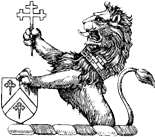An Uncommon Core: Fidelity to the Church

A Lamp in the Darkness: How Faithful Catholic Colleges Are Helping to Save the Church
By Anne Hendershott
Publisher: Sophia Institute Press
Pages: 320
Price: $19.95
Review Author: John M. Kainer
Anne Hendershott, in A Lamp in the Darkness, refers to James L. Heft’s The Future of Catholic Higher Education: The Open Circle (2021) as the work that divided and continues to divide much of Catholic higher education. Fr. Heft imagined his way forward as the middle ground between the extremes of a “marketplace of ideas” university, which presents and debates all sides, and the “closed circle model,” which is concerned with adherence to the Magisterium of the Church. He proposed Catholic universities that are independent of the Church hierarchy, staffed by a combination of Catholics and non-Catholics, and contribute to the pluralism of higher education. As Hendershott argues elsewhere, this has been the standard line in Catholic higher education since the 1967 Land O’ Lakes Statement. What is striking about Heft’s approach is that he incorrectly identifies the middle ground. If virtue is the mean between two extremes, then a Catholic institution must have fidelity to the Magisterium at its center, while the extremes are the “marketplace of ideas” institutions and the lukewarm Catholic institutions Heft imagines.
Central to Hendershott’s project is the notion of “we,” as in, what do we mean when we describe an institution of higher learning as Catholic? This can’t be a postmodern language game in which we all say the same thing and all mean something different. When we describe an institution of higher education as Catholic, we connect it to certain moral and communal obligations characteristic of a particular philosophical and spiritual tradition. In other words, an institution that labels itself Catholic has certain obligations and duties it must fulfill, especially faithful witness to the teachings of the Church. To suggest that we mean anything else is to speak absurdities.
Given this fact, Hendershott’s book focuses on schools that have adopted the closed-circle model because they believe Catholic education isn’t Catholic unless it’s faithfully Catholic. These “faithful few,” as Hendershott labels them, include Ave Maria University (Fla.), Belmont Abbey College (N.C.), Benedictine College (Kan.), The Catholic University of America (D.C.), Christendom College (Va.), Franciscan University of Steubenville (Ohio), John Paul the Great University (Calif.), Thomas Aquinas College (Calif.), Thomas More College of Liberal Arts (N.H.), University of Dallas (Tex.), University of Mary (N.D.), University of St. Thomas (Tex.), Walsh University (Ohio), and Wyoming Catholic College.
Amid intense struggles over the sanctity of marriage, sexuality and sexual orientation, reproductive “rights” and abortion, and, most recently, gender ideology, these schools “have resisted attacks and stayed true in their mission, their education, and their liturgies to the magisterial teachings of the church,” Hendershott writes. When they have strayed from the path of faithfulness, they have rebounded quickly because they never forgot the salvific mission of genuine Catholic higher education. Hendershott is explicit: “Each of these faithful schools was born, or born-again, from a crisis of truth and faith on Catholic campuses…. They faced, and continue to face, attacks both from within and outside…as they continue their commitment to save the souls of the students entrusted to them.”
A Lamp in the Darkness mostly focuses on what might be termed the foundational ideals necessary to produce a faithfully Catholic institution of higher education. The history of Catholic higher education in the United States is the topic of the first chapter. Hendershott explores how revolutions within theology and society, particularly around the 1960s, led many Catholic schools to secularize. She lays out example after example of Catholic institutions caught up in the issues of the day, often embracing the approaches and ideas of their secular counterparts. After three decades of increasing secularization, the Cardinal Newman Society emerged in 1998 to “bring attention to what the founders saw as the scandalous behavior of honoring pro-abortion politicians and celebrities on Catholic campuses,” as Hendershott describes it. No longer a watchdog organization, the Cardinal Newman Society persists in publishing its Newman Guide, to which Catholic families can turn as an authoritative source on the faithfulness of Catholic schools when choosing where to send their college-bound children.
The second chapter calls to mind the first part of the Parable of the Prodigal Son, with the prodigal son recast as Catholic university leaders. It opens with in-depth explanations of Pope St. John Paul II’s encyclical Ex Corde Ecclesiae (1990) and how the vision and mission of Catholic higher education outlined therein shape the culture of the faithful few schools. Hendershott juxtaposes the mission statements of these schools against those of more secularized Catholic institutions. The faithful few focus on the intellectual, spiritual, and moral formation of their students. Drawing inspiration from St. John Henry Newman’s The Idea of a University (1852), these schools “set the explicit goal of forming students as soldiers in the Ecclesia Militans — the Church Militant.” By contrast, Hendershott identifies a certain massaging of language at the secularized Catholic schools, which frequently replace clear statements centered on Christ with more ambiguous terminology — supposedly in the name of openness. For example, in the 1960s, the 28 Jesuit-run universities in the United States began to refer to themselves as “Jesuit institutions” while shifting their focus from the formation of students to the reformation of society (i.e., social justice). Similarly, many Catholic schools began to characterize their mission as “rooted in the Catholic tradition,” that is, stemming or derived from it. Clearly, that is much different than being an active participant in the Church’s evangelical mission.
The third and fourth chapters evoke the prodigal son’s return and reconciliation. They recount the stories of two of the faithful few, Franciscan University of Steubenville and Ave Maria University. Fr. Mike Scanlan transformed Franciscan from a party school on the verge of closing to one of the most well-known Newman Guide schools. Tom Monaghan, the billionaire founder of Domino’s Pizza, used his fortune to build Ave Maria University in southwestern Florida. Common to both Scanlan and Monaghan was an unwillingness to compromise on mission — neither could imagine a Catholic university that didn’t actively share in the Church’s mission of saving souls. These chapters describe the choices and struggles they endured to keep salvation through Christ and His Church at the heart of their schools.
The fifth chapter centers on liberal arts education at the faithful few schools. We have all heard that a liberal arts education is education worthy of free people, but the faithful few pause to ask, “What makes a person or people free?” These schools are unanimous in their belief that freedom comes from an encounter with Christ; therefore, they organize their curricula around this encounter. The chapter closes with a comparison of the liberal arts approaches at Thomas Aquinas College, Thomas More College, and University of Dallas. At Thomas Aquinas, all students study the same thing and exclusively read the Great Books, with classes conducted as seminars. At Thomas More, a wide-ranging and rigorous liberal arts curriculum is joined to the “guild system,” in which students learn practical skills like carpentry from local craftsmen. At UD, a much larger school offering a variety of majors and degrees, students are required to complete a 60-hour liberal arts core curriculum, which, for many students, concludes with studying abroad at UD’s campus in Rome.
Chapter six, which explores academic freedom and tenure at the faithful few, is among the best and most surprising in the book. At a time when institutions of higher education loudly assert their autonomy and supposed dedication to liberal principles, Hendershott cuts through the haze of doublespeak to articulate what academic freedom actually means. Drawing from Ex Corde Ecclesiae, canon law, and theology, she follows John Paul II in advocating an academic freedom simultaneously justified and constrained by the Magisterium. Consider that in John 14 Thomas asks Jesus how they are to follow Him if they don’t know where He is going. Jesus replies, “I am the way and the truth and the life. No one comes to the Father except through me” (v. 6). Academic freedom, for Catholics, requires that faculty affirm Christ’s words. Students and faculty are free to question and discuss, but they cannot misrepresent what has been revealed as true or what has been passed down by the Magisterium. To do so would be to misuse one’s freedom and, in the process, make oneself unfree. Professors and administrators across higher education would do well to ask themselves not “Do I have the freedom to write and say what I want?” but instead “What responsibility do I have to the students under my charge?” One is a question of license and irresponsibility, the other of virtue and prudence.
Speaking of prudence, the next chapter explores the prudence of the faithful few in following Newman’s advice to strengthen the faith of their communities inside and outside the classroom. One thing that differentiates the faithful few is an emphasis on spiritual formation and access to the sacraments, which are, after all, channels of divine grace. Numerous personal testimonies from students describe how their partaking in the liturgical life on campus strengthened their faith and connected them to their peers.
Chapters eight and nine discuss the social and political pressures the faithful few schools face. This pressure is most often exerted by small, well-organized groups of alumni who try to get their former schools to adjust their stances on issues ranging from abortion to academic freedom and Catholic identity, but most often to liberalize their LGBT policies. Chapter nine looks at former Newman Guide schools that, over the past 15 years, altered their policies in the face of such attacks and lost their Newman Guide status as a result. These two chapters, taken together, demonstrate that while secularization may feel inevitable, it remains a choice.
The final chapter ties the various threads together while reflecting on the future of Catholic higher education. Hendershott makes the case that the faithful few schools are distinct entities, but she also notes that they are unified by their allegiance to Catholic doctrine. She discusses institutional fidelity and liturgical character as the foundational pieces that form and uphold faithful Catholic schools. This, she argues, is ultimately what separates the faithful few from Catholic-in-name-only institutions.
A Lamp in the Darkness is extensively researched and footnoted, a testament to the author’s near encyclopedic knowledge of Catholic education in the United States. One important takeaway is any Catholic institution with a mission not anchored to the Magisterium is unlikely to make saints but is certain to produce heretics. Hendershott’s personal conviction about the truth of Catholicism is evident throughout the book. This is refreshing, though it will likely be counted a strike against her by more secularized Catholics and non-Catholics.
©2025 New Oxford Review. All Rights Reserved.
To submit a Letter to the Editor, click here: https://www.newoxfordreview.org/contact-us/letters-to-the-editor/
You May Also Enjoy
The "trigger warning" movement seeks to scrub college campuses clean of words and ideas that might cause discomfort, hurt feelings, or negative thoughts. Almost everything has this potential.
Perhaps it is unrealistic to think of supporting scores of Catholic colleges in our secular society. Perhaps 10 to 15 is more realistic.
Even the brightest graduates of diocesan Catholic schools are idiots.

